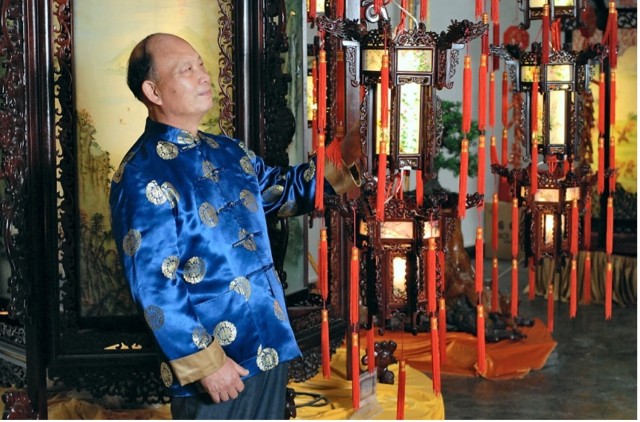Cantonese rosewood palace lantern
The Cantonese rosewood palace lantern is a traditional Chinese handicraft that is both practical and artistic. Originating from the Ming Dynasty (1368-1644), it was produced by Guangdong artists; hence its name.
The lanterns were originally exclusively used by the royal family and their manufacturing method was later introduced to commoners. In the Qing Dynasty (1644-1911), they were produced as tributes to the royal family and exported in large quantities. At that time, the lanterns were widely praised by foreigners and known as “Chinese lanterns”.
Cantonese rosewood palace lanterns are typically made of padauk, sandal-wood and rosewood. They have a delicate hexagonal shape, and can be made in multiple forms, such as hanging lanterns, desk lamps, wall lamps, portable lanterns, and pillar lamps.
The production process consists of skeleton manufacturing and lampshade drawing. Skeleton production includes material selection, drying, sawing, drawing, carving, scraping, assembly, grinding, lacquering, polishing, and painting. Auspicious patterns such as dragons, phoenixes, flowers and birds are carved on the wood.
Glass decoration includes glass cutting, sand blasting and painting, which adopts a wide range of themes such as myths, historical stories, landscapes, flowers, birds, and Chinese calligraphy.
Following production, the glass will be inset into the skeleton and decorated with red tassels. The dignified and solemn lanterns add class and elegance to traditional architecture and have a distinct “Lingnan style”.

Cantonese rosewood palace lanterns [Photo provided to chinadaily.com.cn]







